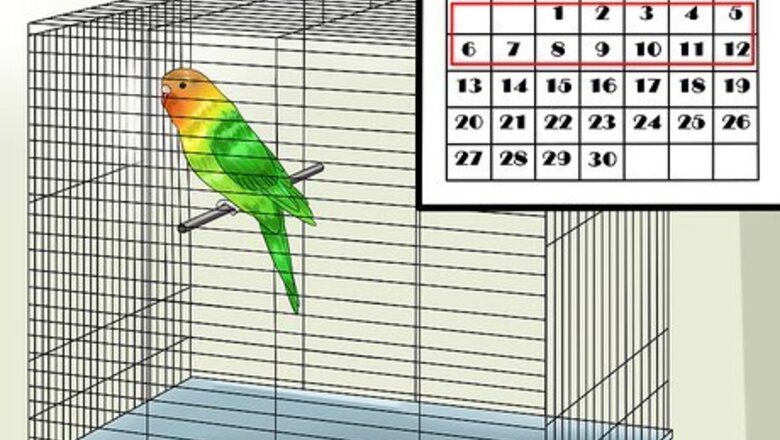
views
Building Your Budgie’s Trust
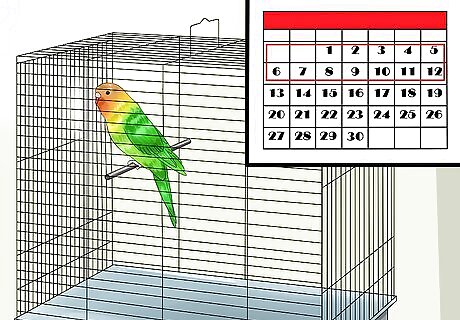
Allow your budgie to adjust to its environment. Budgies can be nervous and skittish animals. Taming them will not be effective if they are nervous in their surroundings. If you just purchased your budgie, give them about 2 weeks to become settled in to their new environment. One of the things that they will do during this time is locate his food and water dishes in their cage. Place the budgie in a busy room during their adjustment period, if possible. Although this may seem counter productive, having them in a busy room will actually let them get accustomed to seeing people as companions rather than threats. However, be aware that budgies have sensitive hearing, so be careful that the room is not a stressful place. Although there is plenty to see, be careful it's not a noisy room with the stereo on high, or a room where there are drafts because of people coming and going. It needs to be a pleasant environment, so as not to overwhelm the bird.
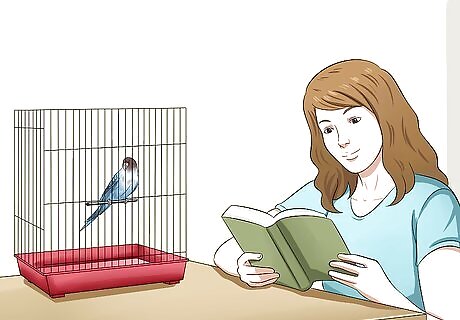
Place your budgie’s cage close to you during normal activities. In order for your budgie to trust you, he will need to become comfortable being close to you. Allow about a week for him to get comfortable with this. Have the cage next to you when you are doing relaxing activities such as watching TV and reading. You do not have to directly interact with your budgie when you have his cage close to you. It’s more important for the budgie to be comfortable in your presence.
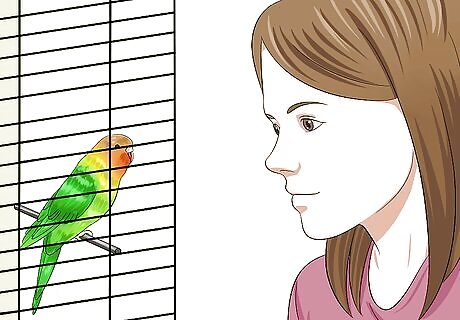
Interact with your budgie without touching them. Once the budgie is comfortable being around you, you can start working on interacting with them more often. You will still need to be very patient with them so that you don’t increase their anxiety. Be mindful not to make eye contact with your budgie. Budgie’s eyes are located on the sides of their heads, which is common in prey animals. Because human’s eyes are positioned on the front of the head, looking directly at a budgie signals to him that you are a predator−you definitely don’t want him to see you this way!
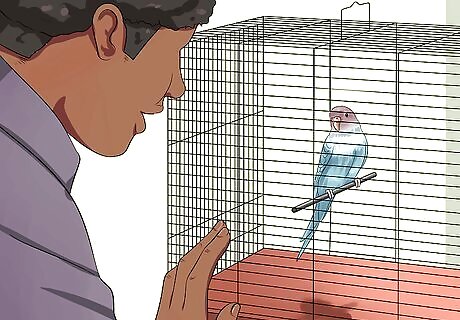
Place your hand on the outside of the cage and talk to your budgie in soothing tones. In this way, they will be able to see your hand as non-threatening; your soothing voice will help to reduce their anxiety. Give the budgie about a week to become comfortable with your hand being outside of the cage.
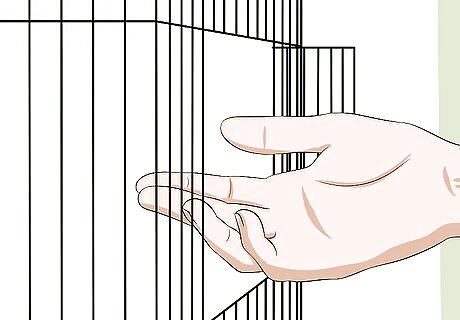
Place your hand inside the budgie's cage. Open the cage door slowly when you do this so that you do not startle your budgie. Do not try to touch them or anything else in the cage. The goal is to have the budgie get comfortable with your hand being in his physical space. It may take about a week for him to become comfortable with this. You can place a towel over your hand if you are afraid that your budgie may bite you.
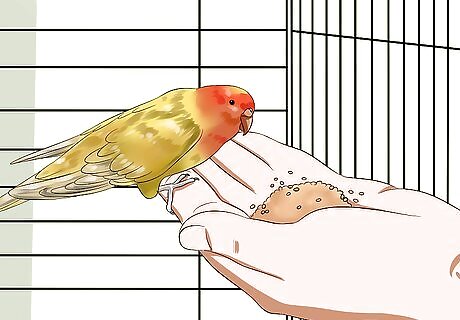
Place your hand in his cage with a treat, such as millet. Slowly move your hand closer to your budgie and see if they will walk to you to grab the treat. Don’t be surprised or discouraged if the budgie gets scared, freezes, or flies to another part of the cage. Practice doing this over at least 3-5 sessions. Move your hand closer to your budgie during each session. Eventually, they will become more comfortable with walking over to you and taking the treat from your hand. Having a treat in your hand each time that you reach into the cage to change your budgie’s food and water will encourage them to get more comfortable with your hand. This step may take anywhere from several days to several weeks.
Hand Taming Your Budgie

Place your hand inside your budgie’s cage. Use the same slow and steady movements and soothing voice that you used when building his trust. Even though your budgie should be much more comfortable with you and your hand at this point, you will need to be consistently non-threatening to them to make progress in taming them. Slowly stick out your index finger so that it will act as a perch for your budgie to step on. Drape a towel over your hand if you think that your budgie will bite you.
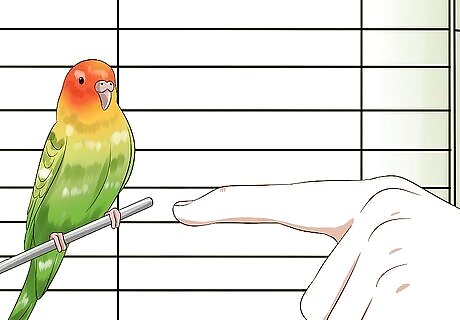
Move your index finger closer to your budgie. Make sure that you do this slowly. Your budgie may react in the same way as when you moved your hand closer to give him a treat. If this happens, wait for the budgie to calm down, then try again. Don't worry if he doesn't warm to you immediately, you'll gain his trust soon enough. If your budgie seems too flustered and nervous, you may want to wait until later in the day or just try again on another day.
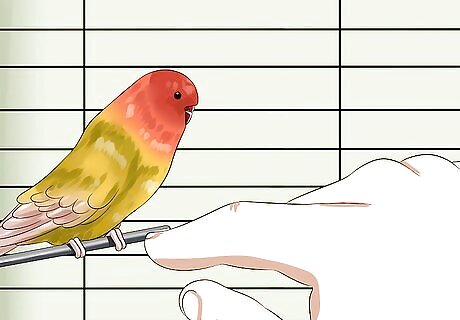
Encourage your budgie to step onto your finger. Once the budgie is comfortable with having your index finger close to him, slowly place your index finger on his chest just above his feet and gently push up. Make sure to use light pressure when you place your finger on their chest. If you are too forceful when you place your index finger on your budgie’s chest, they may get nervous and fly away from you. Your budgie may not understand this movement at first and may fly away. Just be patient with him and try again until he understands what you want them to do. Gently saying ‘step up’ as a verbal cue as you push on your budgie's chest may help them understand that they should step up onto your finger. If your budgie is hesitant, you can use some millet to entice them to step onto your finger.
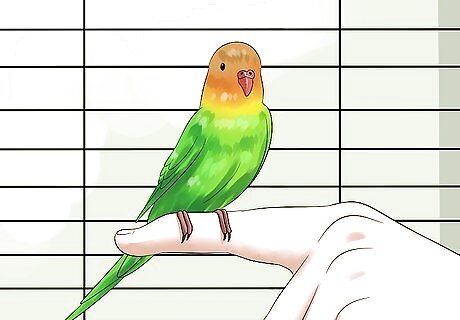
Hold your hand still. When your budgie steps onto your finger, keep your hand as still as possible. Even though budgies are used to perches, it may take some time for your budgie to get comfortable with using your hand as a perch. Reward him with a treat as positive reinforcement for using your finger as a perch. Practice having your budgie use your finger as a perch several times a day, rewarding them each time.
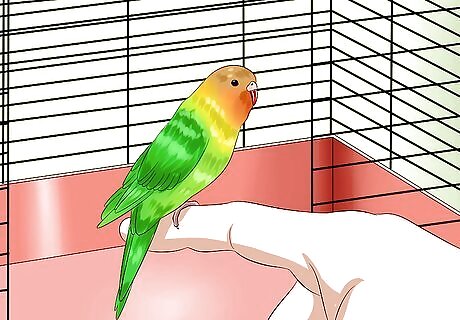
Take your budgie out of the cage. Now that your budgie is comfortable stepping onto your hand, it is now time to practice taking them out of their cage. Use slow movements and a soothing voice to coax them out of their cage. Your budgie may be very reluctant to leave their cage, because that is their comfort zone. You can try enticing them out with treats, but do not rush them. Creating a clear exit path out of their cage (no toys, food and water trays) will help you easily back your hand out of the cage more easily. It is okay if your budgie flies away, or flies right back into their cage, when you get him out of the cage. If your budgie flies away, do not run and chase them. Chasing your budgie will feel like a predator/prey situation to them. Wait for them to sit down somewhere and then calmly walk over to them. Reach out your finger to get it to step up onto your finger. If your budgie flies back into their cage, let them relax for a while and then try again. Taking your budgie out of their cage and keeping them on your finger will probably take at least 1 week of daily practice, but it may take longer. Be patient and move at the pace of their comfort with being outside of their cage.
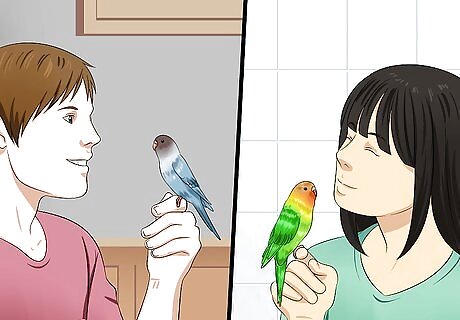
Walk with them to different rooms when they are perched on your finger. Once your budgie is comfortable being perched on your finger outside of their cage, take them to rooms that are unfamiliar to them. The bathroom is a common room that budgie owners will take their bird to. Whichever room you take your budgie to, it would be helpful to cover the mirrors and the windows, since they may serve as distractions. Also, make sure that the room is clean and free of dangers, such as fans or other pets. Your budgie may fly off your finger because it’s a new environment. Once again, do not chase them if they do this. Offering your budgie a treat in the different room may help them be more comfortable in this new room. Aim to take your budgie to a different room for 15-20 minutes at a time, a few times a day.
Teaching Your Budgie to Step Up
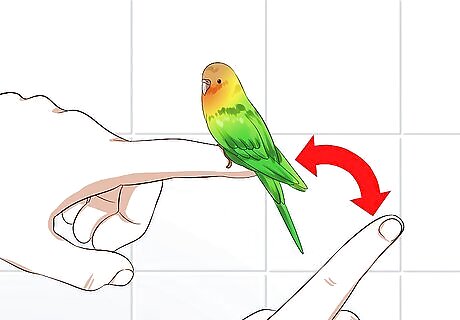
Have your budgie step onto one of your index fingers. This part of the taming process involves both of your hands, so it will be easier to remove your budgie from their cage. You can choose a neutral room that he has become used to, such as the bathroom, or they can stay in the same room as their cage.
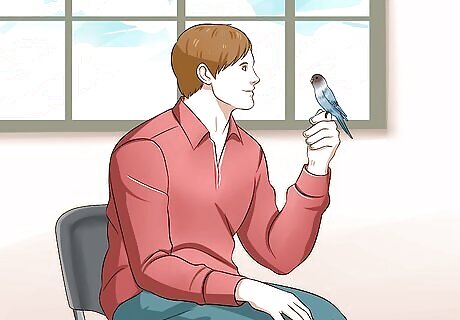
Sit down in a chair, on the floor, or on a bed. Teaching your budgie to step up will be easier to do when you are sitting down. Sit down slowly and gently so as not to startle your budgie or cause them to fly off your finger.
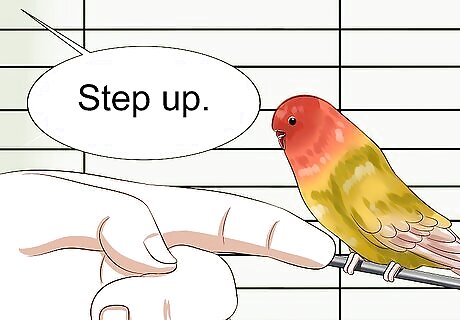
Place the index finger of your other hand on your budgie’s chest, just above their feet. Use gentle pressure against their chest just as you did when you initially taught your budgie how to step onto your index finger. Push up against their chest as you say ‘step up.’ Keep doing this until your budgie steps up onto your finger. Consider making this a daily activity. Soon it will become a habit for your budgie. Your budgie may not be familiar with this verbal cue, so it may take a few tries before they understand that they should step up onto your other index finger. Give him a small treat each time he steps up.
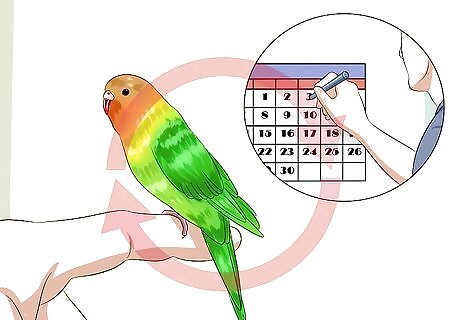
Practice this until they can step up onto your other index finger without you having to push on their chest. As with the other aspects of the taming process, you should practice this several times a day in short sessions (10-15 minutes). Stepping up usually comes naturally to budgies, so it probably won’t take very long for them to learn how to do this on your index fingers. Repetition is key to learning this trick.



















Comments
0 comment